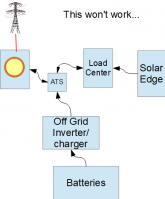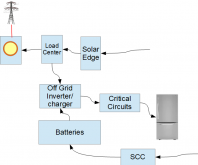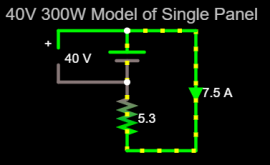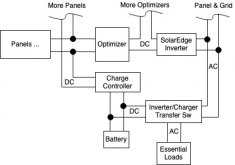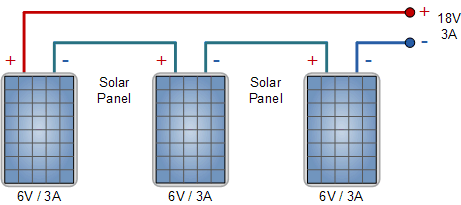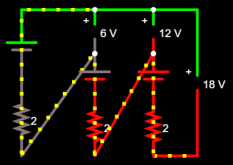ToneJ
New Member
I have a SolarEdge system I designed and built myself. It's a SE7600US inverter and when I originally selected it they were advertising that it could be upgraded to to add a battery backup to it. (StoreEdge Upgrade) They never actually shipped their proposed upgrade but they did start selling the 7600 with the upgraded adapter box. So I currently have no upgrade path to their StoreEdge system without completely replacing my inverter.
So here's my idea, add an inverter (I'm thinking of the Powland) to only run when the grid is down while the SolarEdge runs when the grid is up. Both Inverters would be hooked up to the panels but only one would draw power at a time. I would put Y connectors in between the solar panels and the SolarEdge Optomizers so there would effectively be dual connections to the panels. I might have to install a relay to turn off the connection to the panels going to the off grid inverter so it doesn't try and draw power the same time as the SolarEdge system is. The hybrid inverter would only be hooked up to the essential circuits and the battery. When the grid is up it would feed thru to the essential circuits and charge the battery if needed. When the grid is down, it would power the essential circuit from the batteries or the solar. Does anyone see any problem with this scheme? The only thing I can think of is that the panels are tied together in an open series circuit and that might affect how the SE Optomizers work.
So here's my idea, add an inverter (I'm thinking of the Powland) to only run when the grid is down while the SolarEdge runs when the grid is up. Both Inverters would be hooked up to the panels but only one would draw power at a time. I would put Y connectors in between the solar panels and the SolarEdge Optomizers so there would effectively be dual connections to the panels. I might have to install a relay to turn off the connection to the panels going to the off grid inverter so it doesn't try and draw power the same time as the SolarEdge system is. The hybrid inverter would only be hooked up to the essential circuits and the battery. When the grid is up it would feed thru to the essential circuits and charge the battery if needed. When the grid is down, it would power the essential circuit from the batteries or the solar. Does anyone see any problem with this scheme? The only thing I can think of is that the panels are tied together in an open series circuit and that might affect how the SE Optomizers work.




